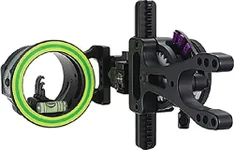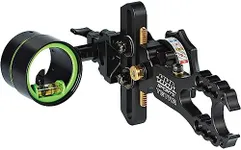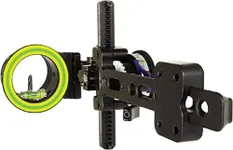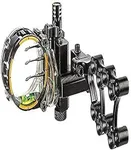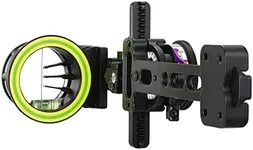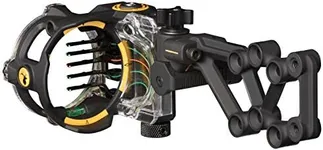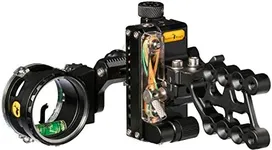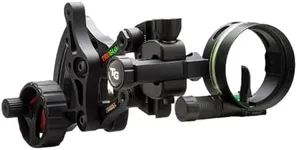Buying Guide for the Best Bow Sights
Choosing the right bow sight can significantly improve your accuracy and overall archery experience. A bow sight helps you aim more precisely by providing a reference point for your target. When selecting a bow sight, it's important to consider your specific needs, such as the type of archery you practice, your skill level, and your personal preferences. Understanding the key specifications will help you make an informed decision and find the best fit for you.Type of SightThere are several types of bow sights, including fixed pin, movable pin, and pendulum sights. Fixed pin sights have multiple pins set at different distances, making them ideal for beginners and hunters who need quick target acquisition. Movable pin sights have a single pin that you can adjust for different distances, offering more precision for target archers. Pendulum sights are designed for treestand hunters, compensating for the angle of the shot. Choose the type that best matches your archery style and needs.
Number of PinsThe number of pins on a bow sight can range from one to seven or more. More pins allow you to set specific distances for each pin, which can be useful for hunting or shooting at varying ranges. However, too many pins can clutter your sight picture and make aiming more complicated. Beginners might prefer a sight with fewer pins (1-3), while more experienced archers might benefit from having more pins (4-7) to cover a wider range of distances.
Pin SizePin size refers to the diameter of the sight pins, typically measured in thousandths of an inch (e.g., .019, .029). Smaller pins (.010-.019) offer more precision and are less likely to obscure the target, making them ideal for target archery. Larger pins (.029 and above) are easier to see in low light conditions, which can be beneficial for hunting. Consider your primary shooting conditions and choose a pin size that provides the best visibility and accuracy for you.
AdjustabilityAdjustability refers to how easily you can make changes to the sight's settings, such as windage (left/right) and elevation (up/down). Some sights offer tool-less adjustments, which can be convenient for making quick changes in the field. Others require tools for more precise adjustments. If you frequently shoot at different distances or in varying conditions, a sight with easy adjustability can save you time and improve your accuracy.
Material and DurabilityBow sights are typically made from materials like aluminum, plastic, or a combination of both. Aluminum sights are more durable and can withstand rough handling, making them a good choice for hunters. Plastic sights are lighter and often more affordable but may not be as durable. Consider where and how you will be using your bow sight and choose a material that offers the right balance of durability and weight for your needs.
LightingSome bow sights come with built-in lighting or the option to add a light, which can illuminate the pins in low light conditions. This feature is particularly useful for hunters who may be shooting at dawn or dusk. If you often find yourself shooting in low light, consider a sight with adjustable brightness settings to ensure you can see your pins clearly without them being too bright and distracting.
